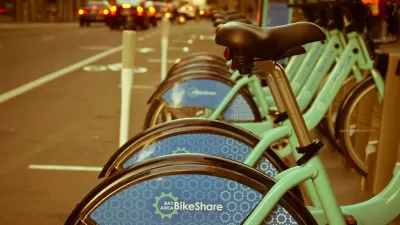Ohio State University plans to launch a bicycle sharing system this fall that is flexible and accessible, meeting the needs of many types of users. The system will include a mix of bicycles including tandem, hand cycle, electric assist, and others.
The Ohio State University has entered negotiations with Zagster to bring a bicycle-sharing system to the Columbus campus. The announcement comes on the heels of a Request for Proposals which delivered five vendor submissions in response to the student-led initiative.
"Our students, and the entire university community, have unique needs and we believe Zagster's proposal offers the most comprehensive and cost-effective solution," said Jennifer Evans-Cowley, Ohio State vice provost for Capital Planning and Regional Campuses.
Ohio State's system will start with 115 bicycles, and 15 stations, delivering a safe and sustainable alternative transportation option for the university community. In addition to commuter bicycles, the system will include tandem, hand cycle, electric assist, heavy duty and three-wheeled cargo bikes.
"We recognize that we have a diverse community, needing different types of bikes for different purposes," Evans-Cowley said. "A cargo bike could be used to transport groceries while a tandem bike will allow a student who is blind to ride along with his or her sight guide. We are optimistic Ohio State will be a leader in accessible bicycle-sharing with a system that provides maximum flexibility."
In addition, "smart bikes" offer travel flexibility and high levels of security for members, using the newest technologies. "This model allows students to navigate campus and surrounding neighborhoods, providing one hour checkout on weekdays and three hours on weekends," said Beth Snoke, director of Ohio State Transportation & Traffic Management. "Security features will allow members to take the bicycles anywhere – including off-campus – and securely lock them."
Zagster currently operates bicycle-sharing programs at Yale University, Duke University, Cornell University, Princeton University and California State University. The system's bicycles are sited in geo-fences which are easy to move and scale and allow for dynamic rebalancing of the system based on demand or planned events.
Pending negotiations, the system could launch as early as summer 2015 with full implementation by fall, fulfilling a request by Undergraduate Student Government to have a program in place prior to the next academic school year. "Students are excited about having a bike-sharing system in place within a matter of months," said student Abby Waidelich, newly elected vice president of Ohio State’s Undergraduate Student Government. "Students have been a key part of this process and believe this system meets the university’s goals."
Ohio State entered the process with three clearly outlined goals:
- Conveniently and safely move people from one place to another on campus – reinforcing the park once philosophy.
- Conveniently and safely offer alternative transportation for connectivity both on campus and to other neighborhoods throughout the city.
- Conveniently and safely provide a sustainable active campus transportation option encouraging healthy lifestyle choices and promoting the university's wellness initiative.
In conjunction with the bicycle-sharing system, the university plans to expand educational safety programming and implement a helmet program, supported by a grant from the Ohio Department of Transportation. Zagster plans to offer students internships and other employment opportunities along with developing research collaborations with faculty.
Zagster, Motivate, Nextbike, Inc., Social Bicycles Inc., and The Gotcha Group LLC submitted proposals for consideration.
FULL STORY: The OSU, Zagster Enter Negotiations for Bicycle-Sharing Program

Trump Administration Could Effectively End Housing Voucher Program
Federal officials are eyeing major cuts to the Section 8 program that helps millions of low-income households pay rent.

Planetizen Federal Action Tracker
A weekly monitor of how Trump’s orders and actions are impacting planners and planning in America.

Ken Jennings Launches Transit Web Series
The Jeopardy champ wants you to ride public transit.

California Invests Additional $5M in Electric School Buses
The state wants to electrify all of its school bus fleets by 2035.

Austin Launches $2M Homelessness Prevention Fund
A new grant program from the city’s Homeless Strategy Office will fund rental assistance and supportive services.

Alabama School Forestry Initiative Brings Trees to Schoolyards
Trees can improve physical and mental health for students and commnity members.
Urban Design for Planners 1: Software Tools
This six-course series explores essential urban design concepts using open source software and equips planners with the tools they need to participate fully in the urban design process.
Planning for Universal Design
Learn the tools for implementing Universal Design in planning regulations.
Ada County Highway District
Clanton & Associates, Inc.
Jessamine County Fiscal Court
Institute for Housing and Urban Development Studies (IHS)
City of Grandview
Harvard GSD Executive Education
Toledo-Lucas County Plan Commissions
Salt Lake City
NYU Wagner Graduate School of Public Service





























